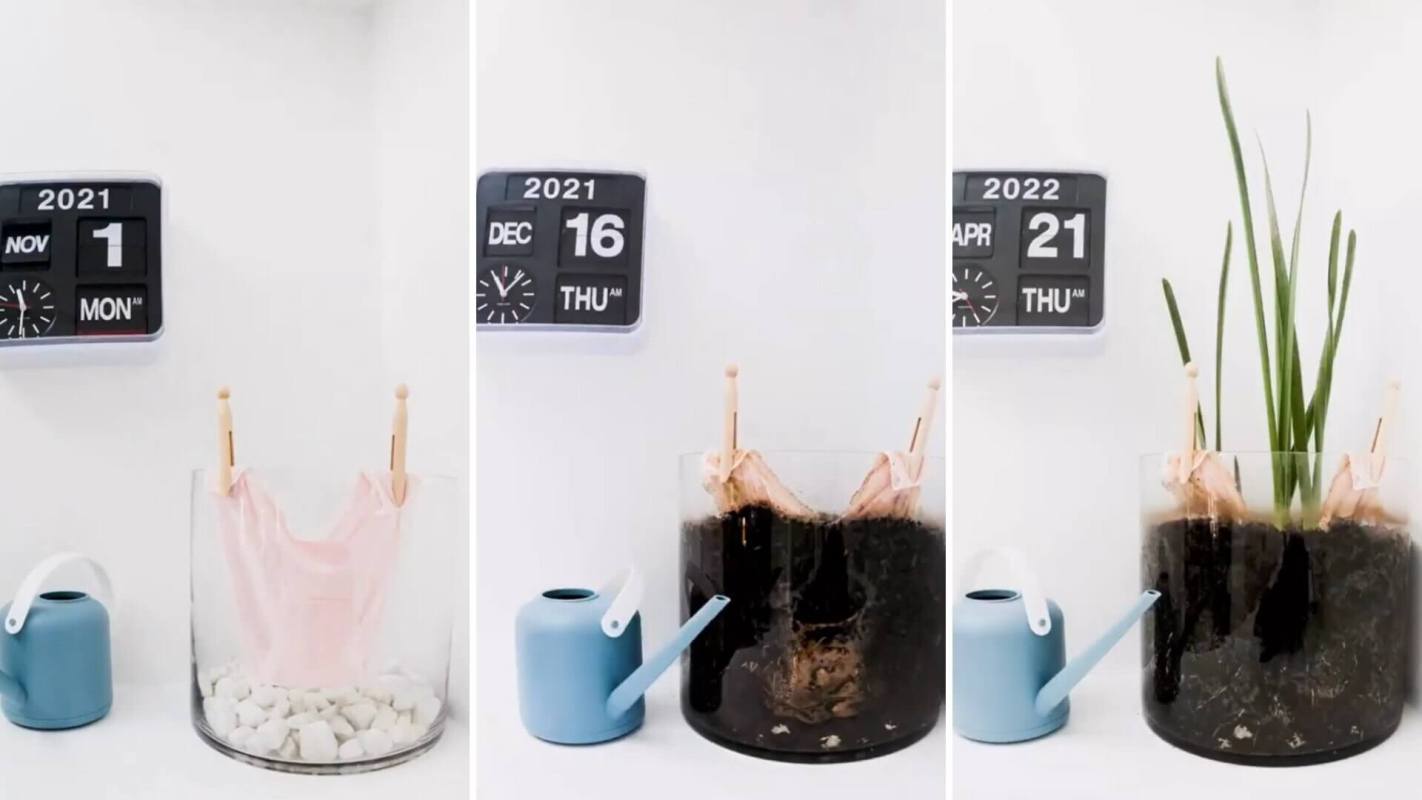Even with second-hand charity shops, textile recycling points, and all the goodwill in the world, the fashion industry is still sending eons of waste to the dump every year.
Could biodegradable fashion be the answer?
What is biodegradable fashion?
Biodegradable fashion refers to clothing made out of organic fabrics that break down naturally when exposed to microorganisms in natural ecosystems.
Instead of relying on synthetic textiles, like polyester and nylon, fashion designers are increasingly using materials like hemp, organic cotton, linen, and even seaweed and mushrooms, which do not harm the environment when they decompose.
Why is biodegradable fashion important?
The fashion industry produces enormous amounts of waste — the equivalent of a garbage truck of textiles goes to the landfill or incinerator every second. Biodegradable clothing intervenes with a more eco-conscious life cycle for our clothes.
Only 13% of clothes and shoes are recycled in the U.S., according to the Environmental Protection Agency.
The rest goes to the garbage dump. In 2018, households sent 24.9 billion pounds of textiles to landfill — equivalent to more than the weight of 210 Titanic ships.
Once there, it can take synthetic fabrics like polyester hundreds of years to decompose. And when they do, they release potent methane gas into the atmosphere, which greatly contributes to the overheating of our planet.
By comparison, cotton takes between a week and five months to break down.
"If fast fashion is to persist, the materials that are used must begin to be able to be cycled back into the raw material textile streams," Suzanne Lee, founder of the biodesign consultancy firm Biocouture, told Scientific American. "They shouldn't be destined to a landfill during the design process; it's on all of us, especially designers, to strive for this change."
What examples of biodegradable fashion brands are there?
Stripe & Stare recently launched a fully compostable underwear line, which is made out of Tencel (wood) and Seacell (seaweed).
But there is one catch. Stripe & Stare still rely on elastane and synthetic dyes for their clothing — something the company says they are trying to change.
In 2020, Stella McCartney launched a line biodegradable denim, which uses biodegradable dyes made out of Indigo Juice and Kitotex Vigital (an ingredient sourced from mushrooms and seaweed).
Adidas jumped on the mushroom trend last year with a vegan version of their Stan Smith trainer made with mycelium leather.
But shopping organic, biodegradable fashion can be far more basic — here are some options for sustainable women's tees, men's tees, underwear, and jeans.
Is biodegradable clothing too good to be true?
Biodegradable clothing shows immense promise for a fashion industry plagued by its waste problem, but consumers still need to be mindful of brands using the "biodegradable" tag to greenwash their products.
There is no universal definition for how long something takes to decompose before it counts as biodegradable. A T-shirt could theoretically take 100 years to break down and still be classed as "biodegradable."
Not all biodegradable clothes are created equally. While the fabric of a garment might decompose naturally, there still may be synthetic materials present in the dyes, sewing threads, buttons, and waterproofing finishes.
Plus, biodegradable textiles only solve fashion's end-of-life problem. Cotton, for example, is famously water-intensive to produce, while also contributing to soil erosion and the use of pesticides.
Fast fashion, then, remains a problematic industry even if it is compostable.
"There needs to be an end-of-life that's less emissive, but we should really also look at the complete supply chain," William Theisen, CEO at EcoAct North America, told Dazed. "I don't want to be dismissive of biodegradability but I think it's only one component of the really huge lifecycle of a product that we need to focus on."
Follow The Cool Down on Instagram and subscribe to our newsletter.








